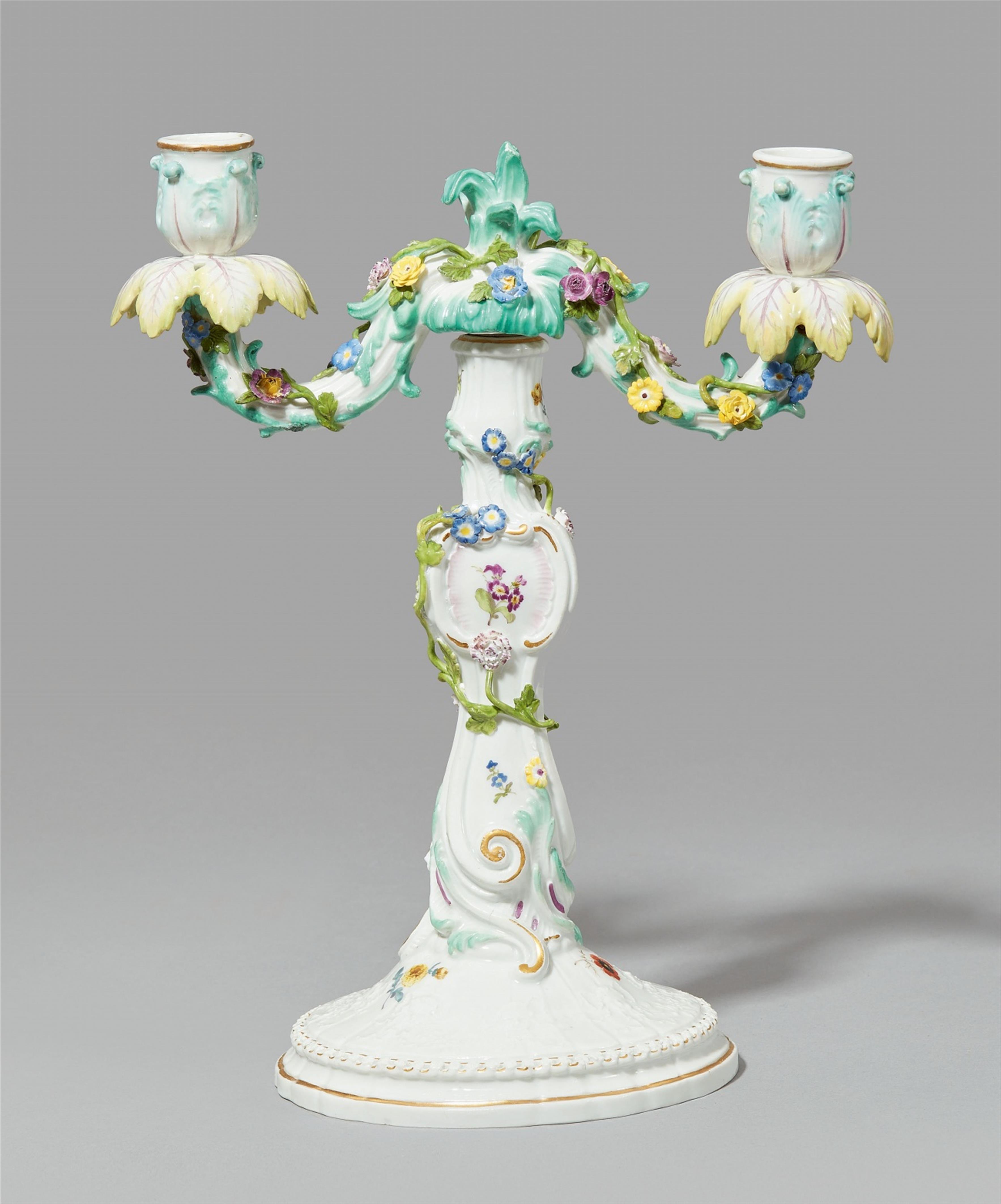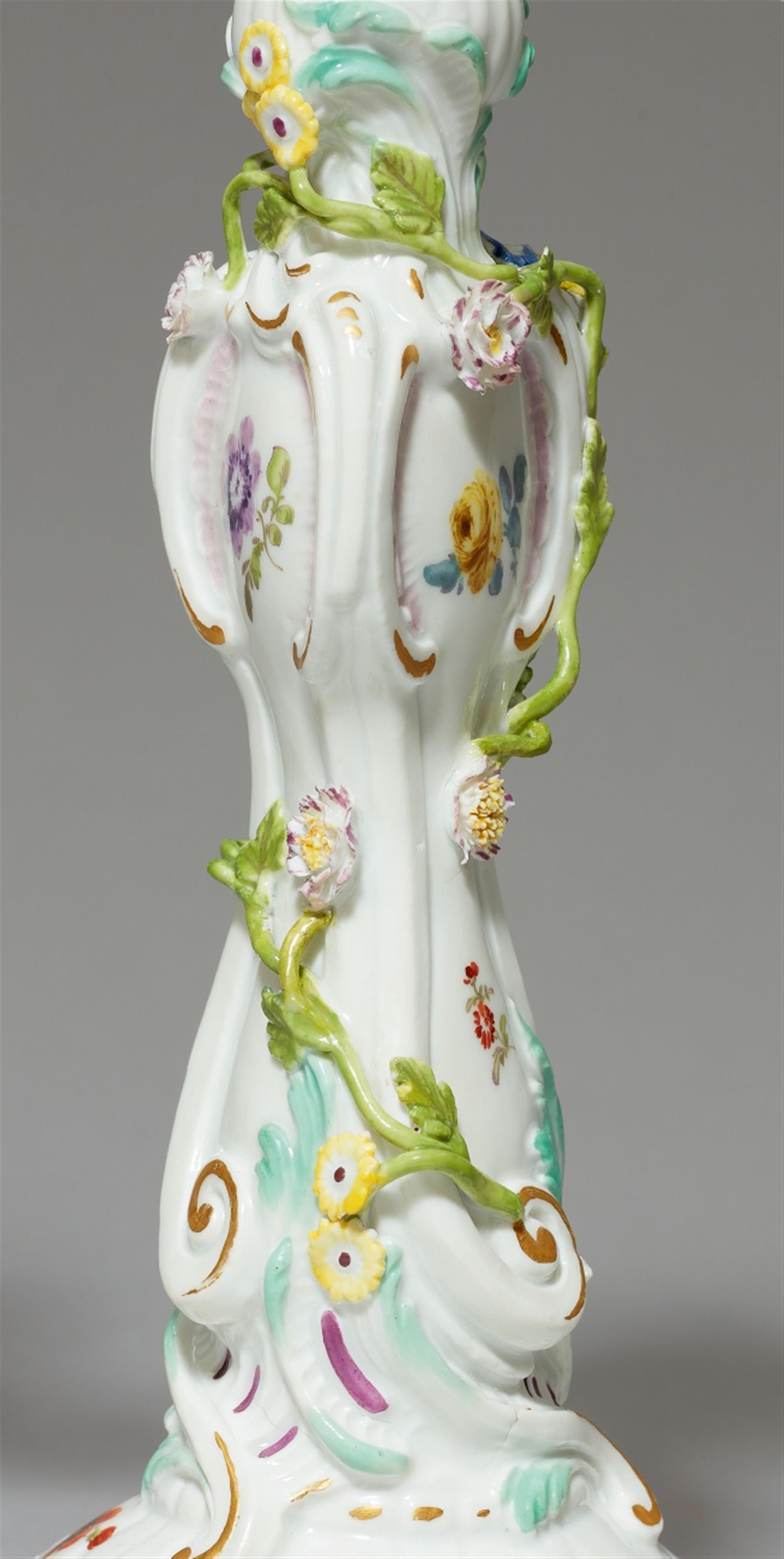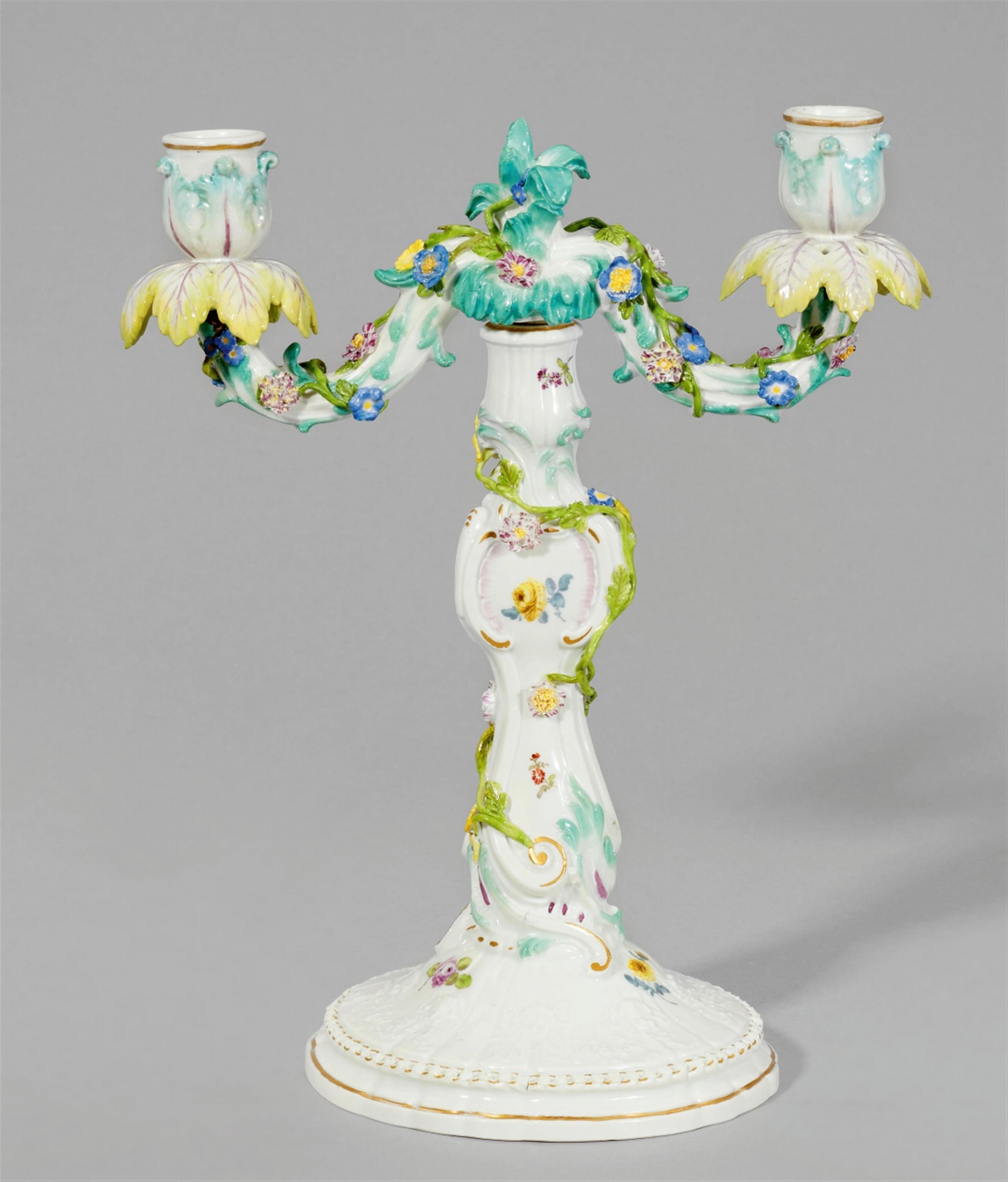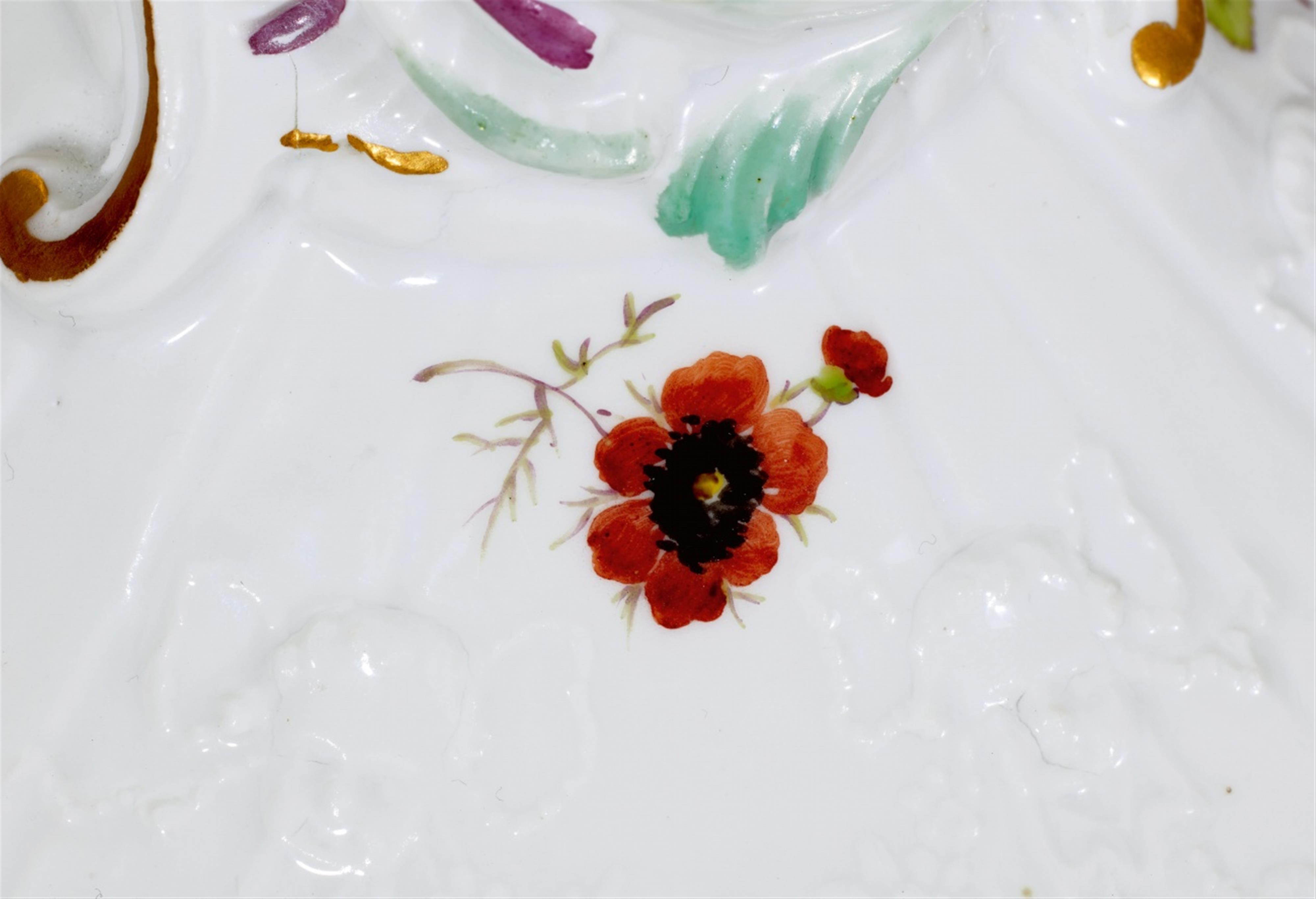A Meissen two-flame candelabra from the Vestunen service for Friedrich II
"Französisches Dessin" model, fired in two pieces. The two curved branches with foliate appliques connected to the central baluster via brass dowels. The finial formed as a bunch of reeds surmounting a baluster form shaft based on a design by Meissonier. The flaring scalloped base with moulded swags suspended from the heads of two amoretti. Blue crossed swords mark. The arms restored, the shaft with a minor firing crack. H 29.5, W 24.5 cm.
1763, model by Johann Joachim Kaendler.
The Seven Years' War was finally ended by the signing of the Peace of Hubertusburg by the Prussian, Austrian, and Saxon royals in February 1763, and Europe could look forward to more peaceful times. To commemorate this happy occasion, in November of the same year Friedrich II commissioned the Meissen manufactory with the production of one of the largest and most personalised services in their history, comprising over 60 place settings and with opulent figural table decorations. In Kaendler's workshop records, published by Samuel Wittwer, one finds the following entry for 11th November 1763, “Newly requested by his majesty the King, an entirely novel table service with swags in the antique style hung from the heads of amoretti in low relief, for which the King himself provided a sketch; [...] the painting shall be of beautiful roses, poppies, carnations, hyacinths, poplars, tulips, monstrose cacti, especially with pretty shellwork, whereby his royal majesty has decreed that no plate should be painted with more than two flowers and that they should be arranged in a proportionate and well thought-out manner so that the two colours do not clash with each other. It has also been ordered that this service should be called the Vestunen Service.” (from the German, ibid. p. 68 f.) The name of the service is recorded in this entry. The word “Vestunen” refers to the festoons, or flower garlands, that decorate the vessels and flatware, the production of which would have been the most time-consuming step for the manufactory.
A surviving list of all flatware, vessels, and figures from the service names, after one large and two small plats de ménage, eight candlesticks, of which previously only one incomplete example was known. Generally, very few pieces from this service are accounted for. The Kaiser Wilhelm Museum in Krefeld holds a tureen and a roasting dish, whilst the Stiftung Preußische Schlösser und Gärten Berlin-Brandenburg houses two cloches and the centrepiece, which Kaendler described in detail. The Museum of Decorative Arts in Berlin houses two porcelain baskets for fruit or sweetmeats formerly in the possession of the House of Hohenzollern, as well as an unpainted plate. One of the original 240 dinner plates is kept in the Dresden porcelain collection, whilst the museum of the Munich Residence houses the five-part centrepiece of the original figural table décor, which is unpainted as per the King's request.
Prior to the Second World War, the Potsdam city museum also housed one of 20 cloches, but this is thought to have been lost during the war. Interestingly, the extant museum inventory card also mentions the origin of the piece as a gift of the Cuthenius family. It is thus imaginable that the ageing King gifted the Vestunen service to his physician Christian Andreas von Cuthenius (14th February 1708 - 5th January 1789) in recognition of his services to medicine in Prussia, presumably in the 1780s towards the end of his life. He also gifted several other services commissioned from Meissen during the Seven Years' War during this time, for example the Möllendorf, Zieten, and Schwerin services, which were all presented to outstanding Prussian militaries, presumably as personal gifts.
We would like to thank Mr. Dag Nabrdalik for this contribution.
Literature
For a detailed history of this service, see: Wittwer, „hat der König von Preußen die schleunige Verfertigung verschiedener Bestellungen ernstlich begehret“ - Friedrich der Große und das Meißener Porzellan, in: Keramos 208/2010, p. 67 - 74.








